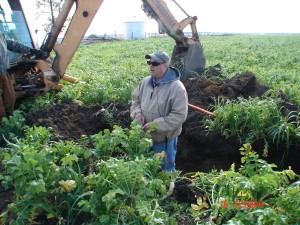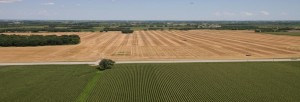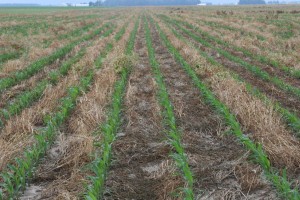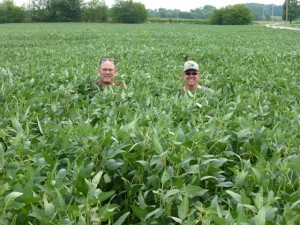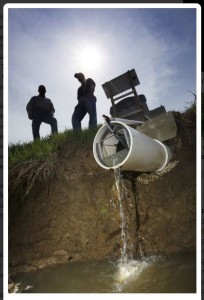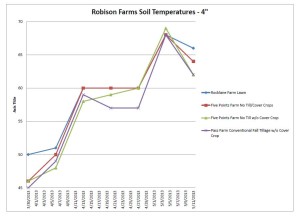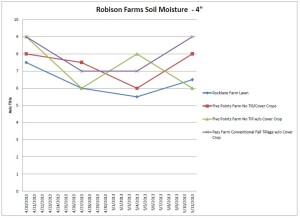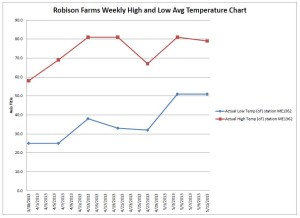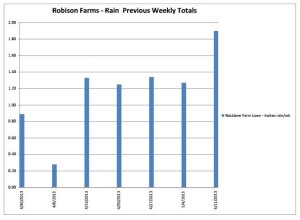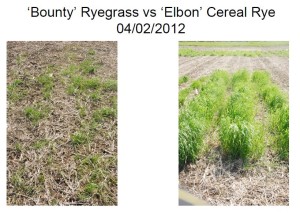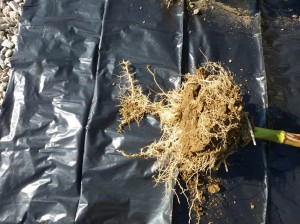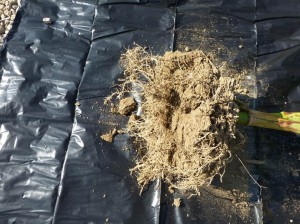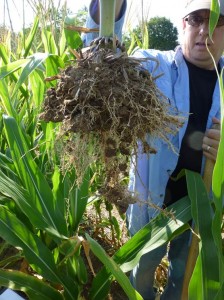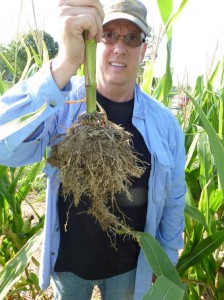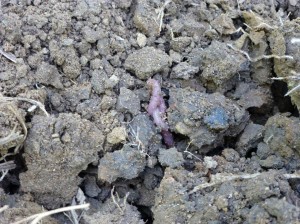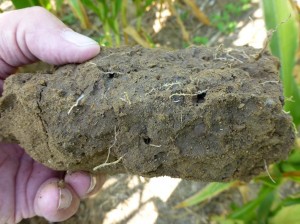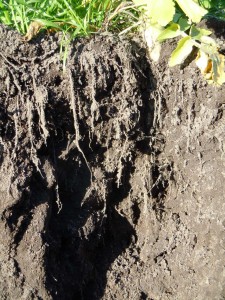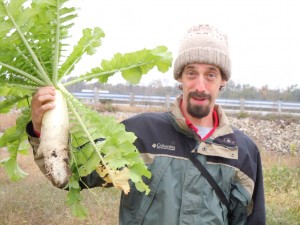It is amazing how much interest there is in cover cropping these days!
Sarah Carlson from Practical Farmers of Iowa and I were discussing this fact in Omaha, NE earlier this week. To think that there would be a conference like we attended in Omaha was almost a “dream” when we were attending some of the first Midwest Cover Crop Council Meetings less than 10 years ago. Many thanks to Eileen Kladivko, Dale Mutch, Dean Baas, Tom Kaspar, Anne Verhallen, Alan Sundermeier, and others who set the pace and path and vision for sharing and researching the benefits of cover cropping.

So, where am I these days? (kind of like “Where’s Waldo?) Over the past seven weeks I have spoken in many states (NY, OH, WI, NE, MI, etc…) and at Ridgetown, Ontario. I have spoken to well over 2,000 producers these past 50 days. I keep telling my wife I’ll check in as often as possible and I try to keep the kids aware of where I am and where I am going (I use this as great geography lessons!). The interest in cover cropping is astounding. I am excited to see so many producers that are using cover crops are excited about what they are doing…I am 100% confident this is NOT a fad.
I have a few more cover crop meetings to add that you might find very interesting.
On March 5 at 10AM I am speaking at the Yahara Pride Farms 2014 Watershed-Wide Conference: Building on our Progress at Lake Windsor Golf Club 4628 Golf Road, Windsor, WI 53598 For more information contact: rachel@yaharapridefarms.org; 608-255-6329 ; www.yaharapridefarms.org.
Starting on March 6 the American Society of Agronomy is conducting a number of Cover Crop webinars. The speakers on the presentations are among the “who’s-who” in cover cropping research and practice. Please register and watch these free webinars!
On March 13 I will be speaking at the Bay County Soil Conservation District’s Soil Health and Cover Crop Meeting in Pinconning, MI. This meeting involves some excellent speakers on soil health and also on local cover crop research.
Also in Wisconsin I am speaking at three Legacy Seeds Cover Crop Seminars. Please contact the folks at Legacy Seeds at karen@legacyseeds.com to preregister. Registrations starts at 9:30 and the meetings start at 10 AM. Early order “discounts” will be available. Lunch will be served at each location.
March 18 at Jakes Northwoods 1132 Angelo Rd. Sparta, WI 608-269-5010
March 19 at the Eagles Club 2588 hwy. 53 Chippewa Falls, WI 54729 715-723-0172
March 20 at Cobblestone Creek Dining and Banquet Center 740 West Ryan St. Brillion, WI 54110 920-756-3214
On April 1 Winnebago Soil & Water Conservation District and AgTech are sponsoring a Cover Crop Workshop in Durand, IL. I am honored to speak at this event. There is an optional field tour after lunch. Preregister by 3-25-14.
On May 9 There is a Soil Health Field Day – Sponsored by Catawba SWCD in Newton, North Carolina. I will not be attending this meeting but it sure sounds like a great day! Thanks to Russell Hedrick for passing this along.
Also, sometime in April – Robison Farms (my brother Don and I along with mom and dad) hope to host a field day at our Greenwood, IN farm where we have 5 acres of replicated cover crop research. More details will follow soon on this.
These are exciting times in Agriculture. Remember to be thankful for those who have come before us and for those who share their knowledge and vision with us. More importantly share your vision and knowledge with others. Most importantly, be thankful to the God of Creation who gives us the responsibility to care for His creation.
Dave
